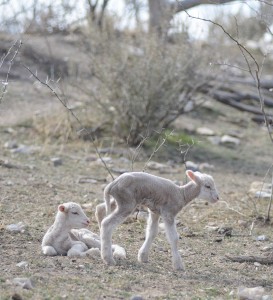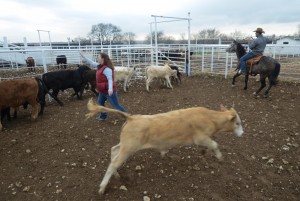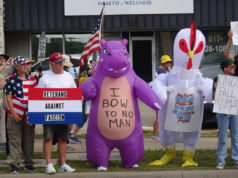Steve Murrin III qualifies as a born optimist, particularly on a recent morning when North Texas had just received about a half-inch of rain. Murrin runs cattle on several properties within 100 miles of Fort Worth, but he’s cut his herd in half in recent years.
“They probably need to be cut more than that, if we weren’t just hoping for rain,” he said.

The official gradations for how bad the drought is all sound scary: Currently, half the state is in severe drought. Worse than that is the category of extreme drought that a quarter of the state is suffering under, according to the U.S. Drought Monitor, a report that reflects information from various sources such as the U.S. Department of Agriculture and the National Oceanic and Atmospheric Administration. Much of North Texas is categorized as suffering extreme drought and — worst of all — some portions are classified as exceptional drought.
Bonds was just a toddler in the 1950s when the state’s worst drought came along and scorched millions of acres of pastureland. The Bonds Ranch is near Eagle Mountain Lake, and the family belonged to the Fort Worth Boat Club. The lake level dropped so low, Bonds recalled, that by the time he walked from the clubhouse to where the water was deep enough for wading, “I’d damn near give out.”
He was 5 when the rains returned in 1957. He can still remember witnessing that first frog strangler. It came down so heavily that the lake was full again in two days.
“I’d never seen a rain like that,” he said. “I remember being with my mother in a car and how much water we were driving through and how hard it was to see.”
These days, seeing through to a drought-less future is just about as hard.
********
Dry weather across the Midwest in recent years has helped to shrink cattle herds around the country. The National Agricultural Statistics Service puts the current number of cattle at about 90 million — that’s 3 percent fewer than last year and the sixth straight year of declining numbers.
Even in hard times, most ranchers resist cutting their herds deeply because it takes too long to build them back up.
“A rancher is a grass farmer,” Bonds said. “His crop is grass. We harvest the grass with cattle. If you don’t have the grass, you don’t need the cattle. The problem is, especially for the consumer, once we have to slaughter these cows because there is no grass, that’s like shutting the factories down. They’re the ones that produce the calves that produce the beef.”
Mass liquidation in 2011 helped drive meat prices down as supply overwhelmed demand. But as those cheap cows and steers were consumed, fewer were coming along behind them. So supplies became short, and meat prices rose. Meanwhile, meat exports are strong — other countries, particularly Asian countries, are clamoring for American beef.
The United States exported about 4 percent of its beef in 1990. Nowadays, about 10 percent of American beef is shipped abroad.

High cattle prices might sound like a good thing for the industry, but they leave ranchers in a bind. Those who were forced to sell their herds two years ago at low prices can’t afford to replace them now. And every mama cow sold last year means one less calf this year for ranchers.
“They are not restocking,” Cantrell said. “They’re going to have to get some rain, and cattle are going to have to get cheaper. Instead, we’re not getting rain, and the cattle [prices] are getting higher.”
Corn prices have also risen, making it more expensive to feed cows that don’t have enough grass. The U.S. government requires gasoline sold in this country to contain at least 10 percent ethanol as a means of reducing greenhouse gases and foreign oil dependence. Fermented and distilled corn is used, and the government subsidizes the process. Nowadays, about 40 percent of the total corn crop goes to ethanol production, and ranchers in need of feed are struggling to pay inflated prices.
If ranchers could build up their herds again and get more meat to market, the prices would come back down. But that takes time — and rain.
As beef prices soar, a prolonged economic recession that began in 2007 means consumers struggle to pay those higher prices.
“The biggest concern we have as beef producers is, will the price of beef get too high for people to purchase?” said Jack Chastain, executive secretary of the Texas Hereford Association.
Many consumers have cut back on red meat because of diet-related risks such as heart disease. Most people in this country still eat red meat, but 39 percent of them are eating less of it than they did three years earlier, according to a National Public Radio survey in 2012.
Meat consumption in the United States has dropped about 10 percent across the board since 2007, but experts attribute that to higher prices and the increasing percentage of meat being sent overseas.
********











